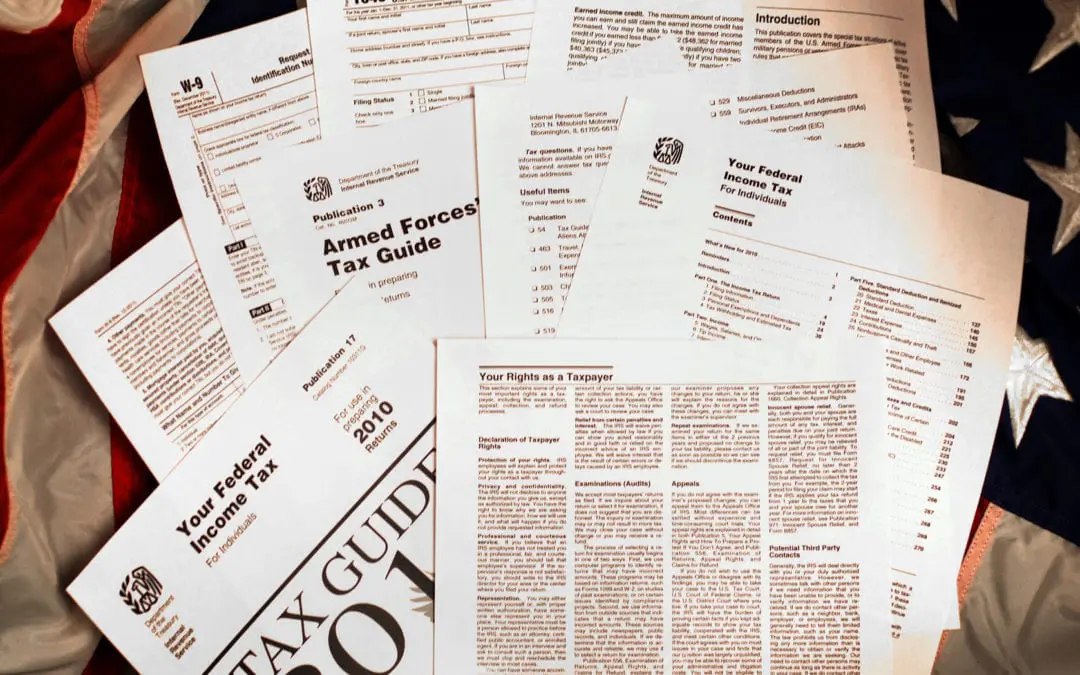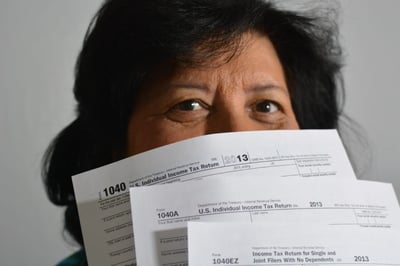List of documents you need to file your taxes
por GBS Group Staff | February 19, 2021 | Insights

A total of 12 hours! That is how long the individual taxpayer takes on average to organize and prepare his or her tax return, according to Better Money Habits of Bank of America. Avoid the frenzy and stress of the tax season by organizing the documents you need for filing well in advance.
But it could be a lot longer if you don't get organized! So, print out and organize the information, select and back each of the receipts up, save time and reduce your stress.
Check out the documents and forms required for preparing your federal tax return and when the time comes, submit your return on time, although remember that this year, the IRS will not process your tax return before February 12.
But don’t let that be an excuse to procrastinate, here you'll have the necessary guidance on the documentation you need to file your taxes and some helpful tips.
Don't miss our post: 2021 Tax Season – what you should know.
Minimum personal information for your return
It might be somewhat obvious, but in order to file your taxes, you'll need your Social Security Number (SSN), as well as your spouse's and dependents'. If you do not have a SSN, you will need to obtain an ITIN or Individual Taxpayer Identification Number.
To make the filing and refund processes faster, the IRS always recommends filing your taxes electronically and requesting refunds via direct deposit. If you plan to choose this option, you must have at hand your bank account number and the corresponding ABA routing number.
You may also have your previous year's tax return handy, although it's not strictly mandatory, it can tell you if you have any excess payments in your favor that have not been refunded yet and it gives you an indication of the documents you used in the previous season.
Income-related documents and forms
Any income you receive, except perhaps for the EIP or economic impact payments, must be documented with the IRS and you will need:
W-2 Form
It displays the amount of withholdings on salary income earned. If you work for one or more employers on a recurring basis and are considered part of the payroll, they are required to send you the W-2 form by January 31.
There you will have the details of the income earned and the tax withheld month by month.
1099 Forms
1099 Forms are a series of IRS forms in which any payment received for different concepts is reported, there are about 20 forms, and each ends with a different suffix.
If, for example, during 2020 you provided services as an independent contractor or self-employed individual, under the "non-employee compensation" role, each company or contracting party who made use of your services for an amount equal to, or greater than, $600 in total, must send you a copy of the 1099-NEC Form by January 31.
Other more common 1099 Forms you should probably have handy when preparing your return are:
• 1099-DIV, if you received any dividend payouts.
• 1099-INT, if you received more than $10 in interest.
• 1099-B, if you sell stocks, bonds, derivatives or other securities through a broker, you can expect to receive one or more copies of the 1099-B Form in January. This form is used to report the gains or losses on such transactions during the previous year.
• 1099-C, you may receive this Form if a debt is condoned or forgiven.
• 1099-G, if you received money or benefits from the government, such as local or state tax refunds or unemployment benefits.
• 1099-R, if you are a beneficiary of retirement plan distributions, IRA, pension or annuities.
• 1099-MISC, for miscellaneous payments such as: rental fees, awards and rewards, or the supply of medical or legal services.
Since it is a long list, we don't mention them all, but you already have an idea of their use and function.
To learn more about this topic, don't miss the post: All about 1099 Forms.

Receipts for income adjustment
You should watch out for expenses or disbursements that can help reduce your taxable income, either by reducing the corresponding payment or by increasing the amount of your refund.
Archive them all, even if you have to use shoe boxes for it!
The most common expenditures are:
• Contributions to the IRA account documented on the 5498 Form
• Student Loans, 1098-E Form
• Mortgage payments, 1098 Form
• Contributions to health insurance, health savings accounts (MSA) or accounts for this purpose, if you work as an independent contractor or are self-employed.
Documents and forms: Deductions and Credits
We cannot forget that during the year, we must keep track of any expenditure or disbursement object of tax deductions and credits. Remember that the former (deductions) reduce your income, as a tax-deductible expense, by making the taxable income lower.
But the second (tax credit) reduce the tax bill or tax payable account "1-to-1". Let's review the most frequent ones.
Most common tax deductions
You should remember that you don't have to provide details to benefit from the deduction and, according to the 2020 tax adjustments, a single or a married individual taxpayer who submits a separate return, can benefit from a standard deduction of US$12,400; the taxpayer who submits a return as head of the family can apply a deduction for $18,650 and married couples who file jointly have a deduction of $24,800.
So, run your numbers right or get help!
Here are the most popular tax deductions, of which you should keep invoices or receipts throughout the year:
• Contributions to the retirement accounts, either to the IRA account or an account of your own, as long as you stay within the contribution limits.
• Education expenses, you can claim both tuition fees and interest on student loans reported on 1098-T and 1098-E Forms.
• Medical expenses, deductibles up to a total of 7.5% of adjusted gross income, with few exceptions.
• Property taxes and mortgage interest, reported on the 1098 Form sent by the creditor.
• Charitable donations, donate! But make sure you get a supporting document, the IRS could reject this claim without it.
• Classroom expenses, applicable to eligible school and related teachers, who can deduct up to $250 in school supplies.
Most common tax credits
These are considered more valuable than deductions, due tot 1-to-1 dollar impact on the tax amount due; and perhaps it is simpler to document them in the event of an IRS audit.
• Child tax credit: Currently worth US$ 2,000 for each qualifying dependent child, up to age 17. In case of adoptions, they may be eligible for additional credits.
• Earned Income Tax Credit (EITC): refundable credit applicable to low-income workers, under certain eligibility requirements, it ranges from $529 to a maximum of $6,557.
• Education tax credits: There are two, the AOTC or American Opportunity Tax Credit, and LLC or Lifetime Learning Credit. They apply to those who incur higher education expenses for themselves, their spouses, or dependents. They are partially refundable and claimed via the 8863 Form, upon receipt of 1098-T Form from the school or higher education institution.

In conclusion
Preparing and organizing the documentation you need to file your taxes is not complicated, but it is somewhat delicate and can become overwhelming. If you omit any document, such as a 1099 Form or a deduction, you'll have to deal with the stress and time expense that an amendment to your federal tax return entails (IRS 1040-X Form).
Seeking the advice of an expert tax preparation professional can be forward-looking and will save you stress and headaches.
